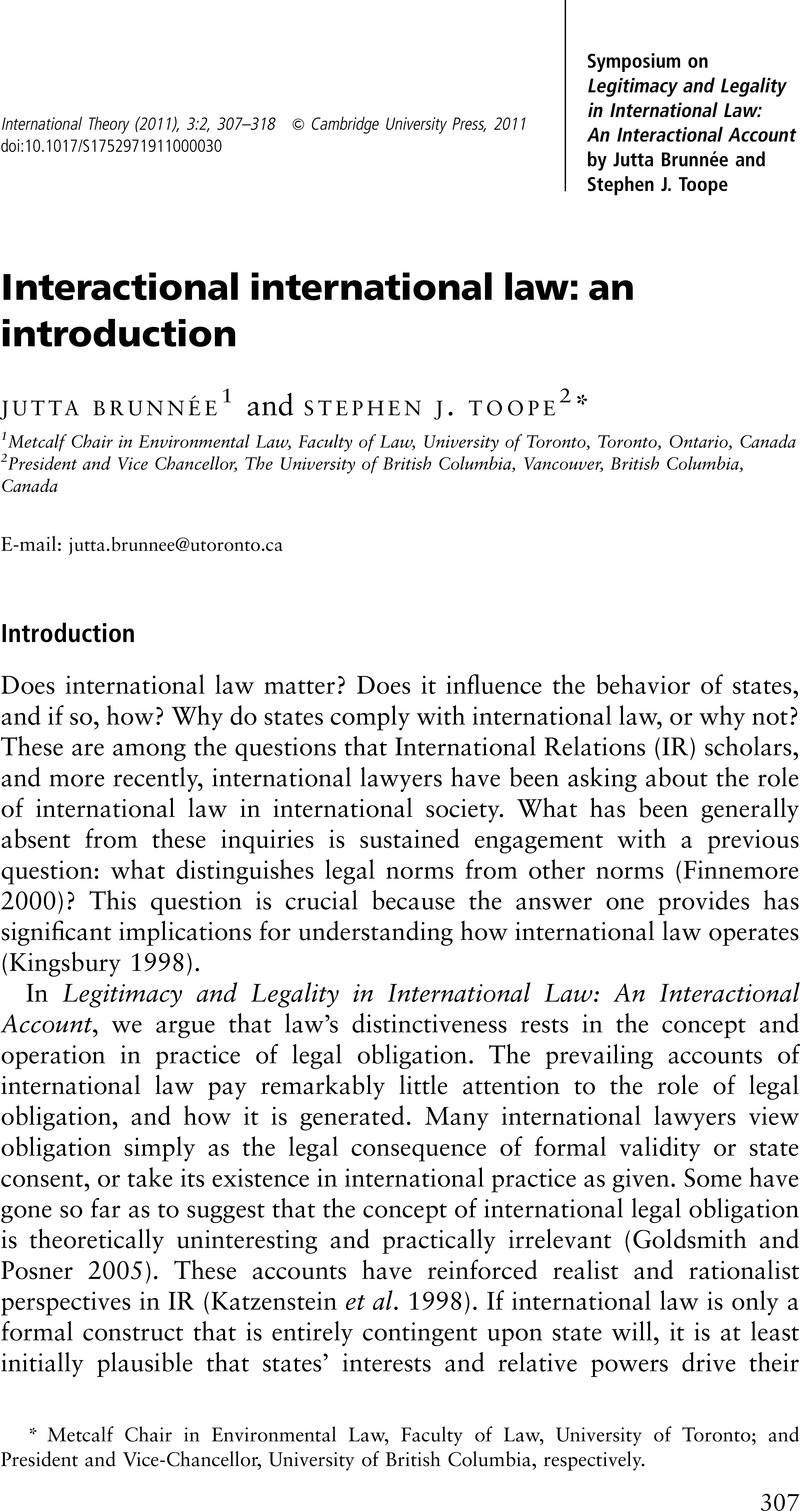Crossref Citations
This article has been cited by the following publications. This list is generated based on data provided by Crossref.
Dunoff, Jeffrey L.
2011.
What is the purpose of international law?.
International Theory,
Vol. 3,
Issue. 2,
p.
326.
Reus-Smit, Christian
2011.
Obligation through practice.
International Theory,
Vol. 3,
Issue. 2,
p.
339.
Brunnée, Jutta
and
Toope, Stephen J.
2012.
Interdisciplinary Perspectives on International Law and International Relations.
p.
119.
Koremenos, Barbara
and
Betz, Timm
2012.
Interdisciplinary Perspectives on International Law and International Relations.
p.
371.
Beck, Robert J.
2013.
Law and Disciplinarity.
p.
3.
POPPE, ANNIKA E.
and
WOLFF, JONAS
2013.
The normative challenge of interaction: Justice conflicts in democracy promotion.
Global Constitutionalism,
Vol. 2,
Issue. 3,
p.
373.
Slominski, Peter
2013.
The Power of Legal Norms in the EU's External Border Control.
International Migration,
Vol. 51,
Issue. 6,
p.
41.
Hallwood, Paul
and
Miceli, Thomas J.
2013.
An Economic Analysis of Maritime Piracy and its Control.
Scottish Journal of Political Economy,
Vol. 60,
Issue. 4,
p.
343.
Houghton, Katherine
2014.
Identifying new pathways for ocean governance: The role of legal principles in areas beyond national jurisdiction.
Marine Policy,
Vol. 49,
Issue. ,
p.
118.
Phillips, Freedom-Kai
2016.
Intellectual Property Rights in Traditional Knowledge: Enabler of Sustainable Development.
Utrecht Journal of International and European Law,
Vol. 32,
Issue. 83,
p.
1.
Birdsall, Andrea
2016.
But we don’t call it ‘torture’! Norm contestation during the US ‘War on Terror’.
International Politics,
Vol. 53,
Issue. 2,
p.
176.
Hallwood, Paul
2016.
International Public Law and the Failure to Efficiently Manage Ocean Living Resources.
Marine Resource Economics,
Vol. 31,
Issue. 2,
p.
131.
Gren, Jakub
2017.
Exploring Strategies of Supranational Influence in the Banking Union: SSM Indirect Supervision of Less Significant Banks.
SSRN Electronic Journal,
Jose, Betcy
2018.
Norm Contestation.
p.
103.
Alter, Karen J.
2018.
The Contested Authority and Legitimacy of International Law: The State Strikes Back.
SSRN Electronic Journal,
Wiener, Antje
2018.
Taking Stock of Integration Theory.
SSRN Electronic Journal ,
Poppe, Annika E.
and
Wolff, Jonas
2019.
Justice and Peace.
p.
193.
Adler, Emanuel
2019.
World Ordering.
Hallwood, Paul
2020.
Interpreting Historical Sequences Using Economic Models.
p.
1.
Magomedova, Olga Sergeevna
2021.
The concept of international legal policy of the state as a new twist in the development of sociological approach towards international law .
Международное право,
p.
39.


